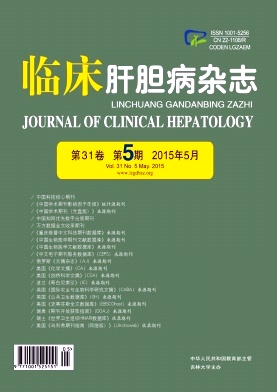Objective To characterize the energy metabolism in patients with chronic hepatitis C(CHC) and to provide a basis for clinical nutrition intervention.Methods This study included 70 cases of chronic hepatitis C(CHC) admitted to Beijing You An Hospital affiliated to Capital Medical University from December 2004 to September 2014,as well as 30 healthy controls(HCs).Energy metabolism indices were measured with the critical care management system,including resting energy expenditure(REE),predicted resting energy expenditure(p REE),respiratory quotient(RQ) and carbohydrate oxidation rate(CHO%),fat oxidation rate(FAT%),and protein oxidation rate(PRO%).Comparison of categorical data was made by chi-square test; for continuous data,comparison between two groups was made by independent-samples t test,while comparison between three groups by one-way analysis of variance.Results REE and REE / p REE(%) in the patients with CHC were 1360.46 ± 467.55 kcal/d and 99.07% ± 32.92%,respectively,without significant differences compared with those in HCs(P = 0.169; P = 0.660).RQ of 0.82 ± 0.06 and CHO% of 35.80% ± 19.56% in CHC patients were lower than those in HCs.(P = 0.000; P = 0.000).FAT% and PRO% in the participants with CHC were 46.64% ± 22.76% and 17.56% ±8.80%,respectively,significantly higher than those in HCs(P = 0.011; P = 0.000).REE / p REE(%) in the CHC patients with mild,moderate,and severe liver injury was 93.47% ± 26.57%,105.42% ± 37.88%,and 116.09% ± 46.24%,respectively; there were no significant differences across the three groups(P = 0.092).For the three groups,RQ was 0.84 ± 0.06,0.81 ± 0.06,and 0.78 ± 0.05,respectively,and differed significantly(P = 0.001).There were no significant differences in the severity of liver injury between patients with different genotypes(P = 0.312).RQ was 0.81 ± 0.06 for CHC patients with 1b genotype versus 0.85 ± 0.06 for non-1b genotypes(P = 0.010).Conclusion Generally,CHC patients show a normal metabolic state.REE ascends with increasing severity of liver injury.CHC patients have metabolic disorders of nutrients with increased FAT% and PRO% and decreased CHO%,which may be related to the severity of liver injury and genotype to some extent.







 DownLoad:
DownLoad: